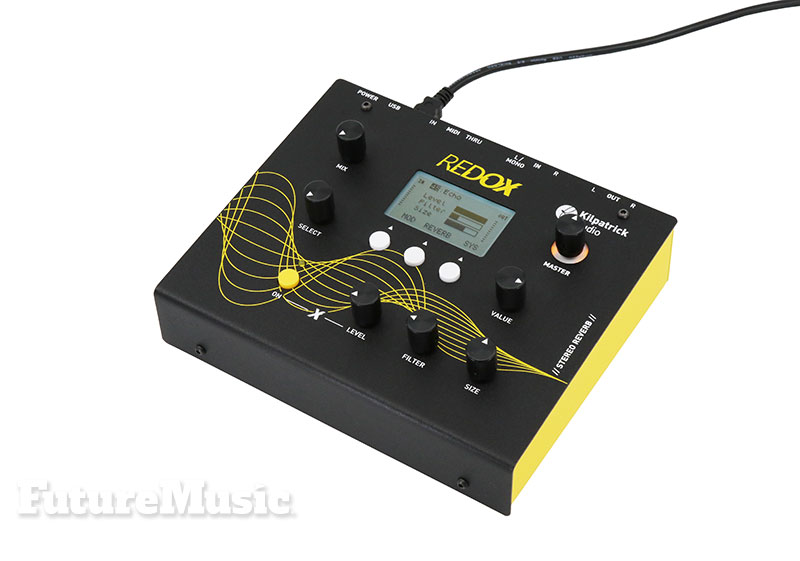Kilpatrick Audio Redox Review
Long-Term Test
Lee esta reseña en español
FutureMusic was lucky to obtain a Kilpatrick Audio Redox for a long-term review from the boutique Canadian manufacturer. Kilpatrick designed the Redox specifically for electronic musicians for both live and studio use. Although the Redox has a stomp box vibe, it’s meant to be used on a desktop where your fingers can have immediate access to the knobs. Yes, that’s correct, the Redox, unlike most dedicated reverb units is meant to be tweaked in realtime. The unit traveled to five different reviewers and each one of them spent considerable time with the Redox, exploring its sonic possibilities in their unique studios and workflows – their comments in quotes below.
With a distinctive “80’s feel and workflow” the Redox straddles the retro and modern reverb worlds with its own distinctive sound that is at home both in a fully automated studio or next to a DJ rig. The Redox employs Kilpatrick’s proprietary Core1 DSP technology that the company has developed for sound quality and low power consumption. In fact, the Redox can be powered via USB and only requires 1W of juice. Our reviewers initially flagged the power requirement, believing it would be problematic, but once they got their hands on the unit, the suspicions evaporated. Whether it’s the new Core1 architecture, the low-power, grayscale LCD screen or the Redox’s narrow focus, the unit never felt power deprived.
The front panel controls allow the user to tweak the room size and reverb filter in realtime, allowing the Redox to work itself as a standalone processor or directly into the signal chain of a designated sound module. One of our reviewers, who works mostly in the ambient and cinematic worlds, used the Redox along side his favorite analog synth to enhance his pads and washes. “Having immediate control over the weight and thickness of a selected reverb provided my own patches with an extra dimensionality that I never previously had access to,” recounted one evaluator.
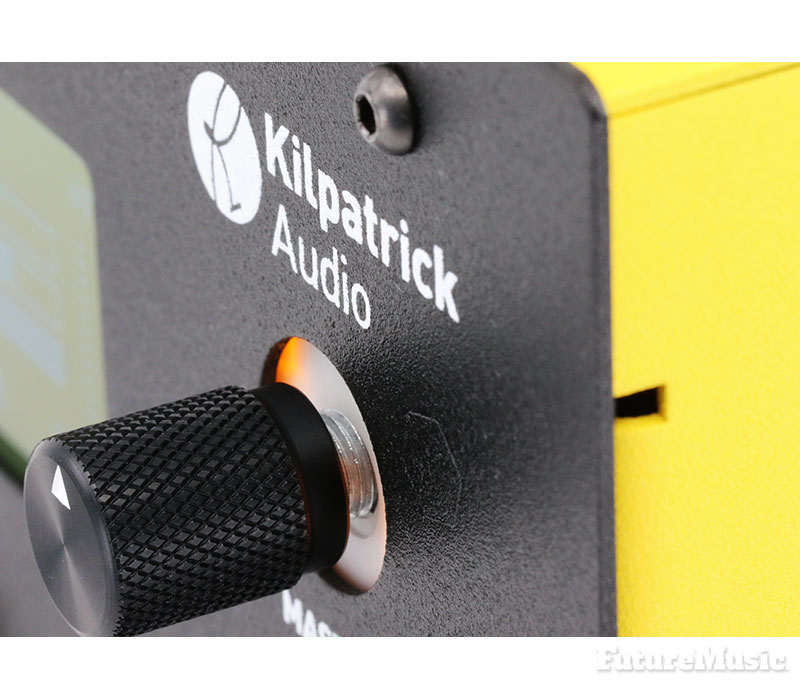
“The Redox has a distinctive color and sound that I wasn’t quite expecting,” noted one reviewer, “it reminded me of one of those 1980’s ART effects processor with the fluorescent pink graphics.” Another tester commented, “it’s got a unique thickness and density to it that I can only equate to the densest, wettest fog.” There are only a handful of controls to modify the reverb, and each have a profound effect on the other attributes, allowing you to create many different sound fields through deliberate experimentation. Kilpatrick calls these MOD control and you can think of it as implementing stomp boxes before and after the reverb algorithm. For instance, want some of that 80’s grit that the old ART processors mentioned above contained? Add Distortion to the chain before the reverb. Other MODs include, flanging, phasing, panning, vibrato, as well as the distortion mentioned previously. But things really start to get interesting when you incorporate the Looper.

For a limited time only! Up to 80% off all Waves Bundles. PLUS use Waves promo code “CK901” for an additional 10%! This is Waves best deal yet! Get yours today before this special ends! GO!
Buried inside the Redox is a Looper function that allows you to re-inject the effects into the processor as the inputed sound continues to develop and build. Our Ambient artist found this to be the units “Jedi Power” and provided him the ability to “continuously add viscosity and texture” to his soundscapes. “Utilizing the Looper can breath new life into some of your previously ‘played out’ synth patches,” he reflected. Our DJ tester also noted the MODs and Looper function for “creating dynamic, evolving transitions” in tracks that were previously a challenge to mix coherently.
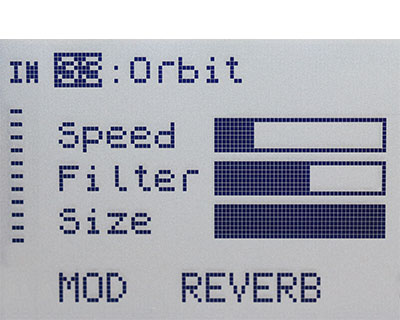
Another feature that many may miss when evaluating the Redox for their needs is the full MIDI implementation. All parameters can receive CC messages either via the DIN MIDI connection or over USB. This can address a deficit of the Redox that all our reviewers noted, the knobs. The Redox has plenty of real estate on the top of the unit, but only uses a fraction of the space for “just a few small knobs” and the “postage stamp-sized LCD screen.” Kilpatrick’s choice of knob hardware has one reviewer scratching his head, “for a unit that costs over $600 bucks, I’m surprised how tiny the knobs are on the Redox.” Now this may not be such an issue if you’re dialing in a reverb in the studio and moving on, but considering the live performance potential of the Redox, we think this could been better thought out and implemented. That said, with full CC control, you can use an external MIDI controller to “open up the full power of the Redox,” but it would have been best to “have baked in the tweaking action.”
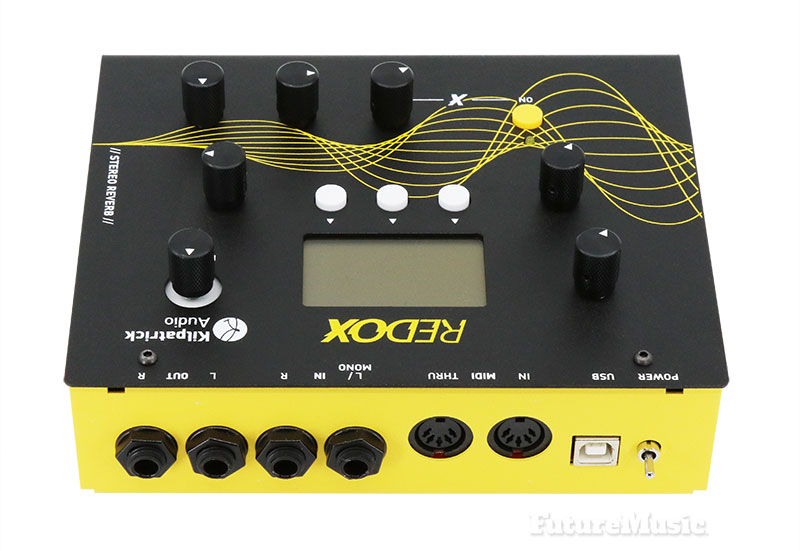
Kilpatrick Audio Redox Features:
» Stereo algorithmic reverb with high dynamic range processing
» Super long and smooth reverbs perfect for creating ambient textures
» MOD effects – flanging, phasing, panning, vibrato, distortion – work along with reverbs for creative possibilities
» Adjustable pre-delay on all reverbs up to 200ms
» 24 bit converters and >100dB dynamic range (ADC to DAC)
» High dynamic-range floating point signal processing prevents internal clipping
» Low-latency signal processing of around 1ms
» LCD screen GUI
» Quick-access parameter controls for MOD control, reverb filter and size
» Neutrik 1/4″ line audio jacks
» MIDI control of all functions via USB or DIN MIDI
» Internal memory for storage of up to 99 presets plus live settings
» Factory presets designed by Patrick McMaster
» Free web-based KAPatchLoader upload/download tool for managing presets
» 5V USB powered, draws less than 250mA – great for portable use
» Integrated 100x100mm VESA mounting holes permits secure mounting using standard hardware
» USB cable and power supply included
» Dimensions: 7.0″ x 6.0″ x 2.5″ (with knobs)
» Weight: 2lbs (0.9kg)
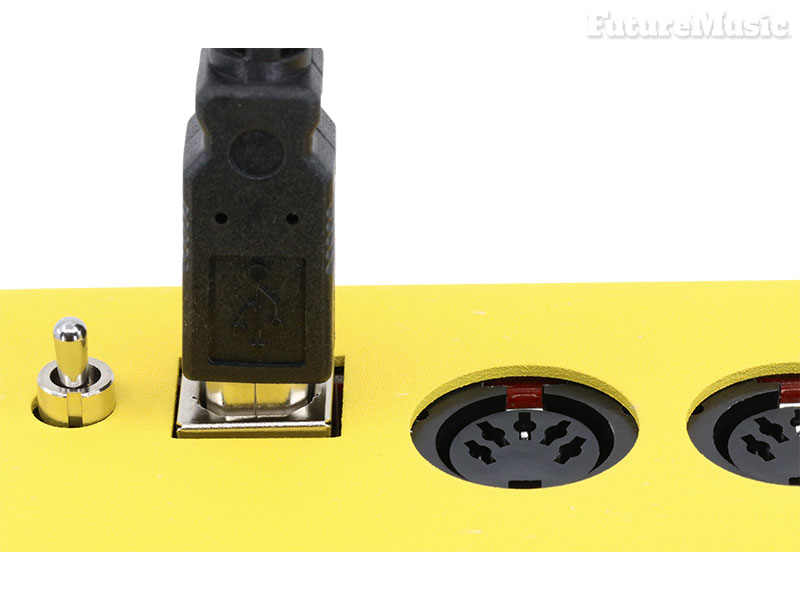
For monophonic synth owners, the Kilpatrick Redox can turn any one-dimensional source into an expansive stereophonic sound field, opening up new possibilities. With the popularity of affordable monophonic synths on the market, this is something that should appeal to many electronic musicians. Our reviewers loved what the Redox did to Arturia’s MicroBrute, the Moog Mother-32, the Behringer Model D, and even everyone’s favorite little silver box. With an “ultra-wide sound stage” and “beefy reverb that you can take a bite out of” the Redox turned these units into “pure stereo fun.”
Conclusion
Kilpatrick Audio’s Redox makes a strong case for a dedicated reverb unit that’s equally at home in the studio or on the road. While not perfect, it ticks all the major boxes and definitely should be considered, especially if your creating/performing more ethereal music. Recommended!
Rating: 87%
Cheers:
+ Build Quality
+ Sound Quality
+ Live Performance
+ Looper
+ MIDI Implementation
+ Low Power
+ Connectivity
Jeers:
– Small Knobs
– No Dedicated MOD Controls
– User Interface
– Expensive
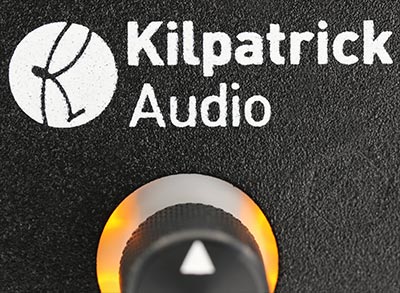
Kilpatrick Audio’s Redox costs $489.
Click To Tweet — Read the Kilpatrick Audio Redox Review by @Future_Music

The Future:
We’d love to see Kilpatrick come out with a Redox MkII with a full arsenal of knobs across the front to tweak all the major parameters for live performance. With just a few knobs, the Redox is handicapped on this front. A couple of our reviewers were able to work around this with a standalone MIDI controller and even automate some of the attributes via computer CC control, but it would just be fabulous to do this right on the box. The limited size of the LCD screen and the “1983 menus” also made it hard to delve into the MODs and Looper. A shame, since there is such potential here for exciting modulation.


